The following article was produced in participation with the Partners in Preservation program, which will be awarding $3 million in grants to historic sites across New York City based on your votes – so go vote now!
Chances are, when you think of Ellis Island, you picture just one building…
The “Main Building,” a Beaux-Arts masterpiece built in 1900, through which millions of immigrants passed until its closure in 1954. Today, it houses the Immigration Museum, and if you’ve ever visited on a school field trip, or passed through on a vacation, this is where you spent your day.
One question: while you were there, did you happen to turn around…
…and notice the row of gorgeous Belgian-style buildings across the water? The ones that seem to be totally abandoned?
And as the ferry was departing, did you notice that these buildings seem to extend well into the center of the island?
Because Ellis Island is a lot more than just the Main Building everyone is familiar with. It was actually a huge complex, featuring a state of the art hospital pavilion on its south side complete with laboratories, a psychopathic ward, a power station, a laundry building, and more.
Today, the entire complex sits abandoned.
From a distance, many of the buildings appear to be in pretty decent shape, especially considering they’ve essentially been left to decay since the island officially closed in 1954. For example, this was an old laboratory building…
…and features one of the more beautiful entrances on the island, still impressive despite so many years of decay:
Back then, a typical lab interior would have looked something like this:
But looks are deceiving. If you examine the facades more closely…
…you’ll see that the damage is actually quite severe, with portions of buildings literally being strapped together to keep from crumbling.
Subjected to an endless beating from the elements, windows are missing, bricks are cracking, and overgrowth is taking over.
Meanwhile, recent work to rehabilitate the seawall has literally caused the foundation of the island to shift, putting additional undue stress on the buildings. Monitors like the one below measure the ongoing damage – and it is significant.
In short, Ellis Island’s south side is dying, and has been for nearly 60 years.
But there is hope. In 1999, the non-profit group Save Ellis Island was formed with a mission to oversee the restoration, rehabilitation, and reuse of the twenty-nine remaining unrestored buildings on the island’s south side. To date, the group has helped to secure millions of dollars in federal and state funding along with private donations, and work has begun to stabilize and rehabilitate the structures.
But this sort of work isn’t cheap; it would take an estimated $350 million to completely restore the remaining buildings. Worse, the process of rehabilitation, from paperwork to approvals to construction, takes a tremendous amount of time – and right now, time is the worst enemy these structures have. Below, an old recreation building, hidden by overgrowth.
Save Ellis Island has made some huge strides in achieving their goal. However, to fully appreciate the group’s work, I think it’s necessary to first take a look at just how bad the decay is…and what hidden treasures still remain waiting to be saved behind crumbling brick walls.
For the first years of its existence, Ellis Island was simply equipped with a small, two-story wooden dispensary, which was inadequately prepared to deal with the incoming threat of infectious diseases like cholera and diptheria. After it burned in 1897, a makeshift replacement was created, but patients were increasingly transported to neighboring hospitals.
Then, in his first State of the Union Address, President Theodore Roosevelt mandated that a more rigid system of examination take place at immigration ports, both to protect the country from disease and to prevent “undesirables” from entering. William Williams, a Wall Street lawyer, was appointed the new commissioner of Ellis Island and soon decided that a state-of-the-art medical facility was necessary for the island to fulfill this duty.
But where to build it? There simply was no land available on the island. To solve the problem, fill was brought in from the tons of rocks being excavated at the time to create the New York City subway system. The new hospital wing was intentionally built away from the Main Building area in the hopes of preventing disease from spreading.
The new Ellis Island Immigrant Hospital soon became one of the most advanced hospitals in the world. Rather than create one central building, a number of separate pavilions were built, connected by numerous tunnels.
There are a LOT of tunnels on Ellis Island.
Going off to the left would have taken you to the General Hospital; to the right was the Contagious Disease Hospital.
An old stairway leading to the General Hospital, which eventually grew to 275 beds, one of the largest in all of New York City.
Probably the most incredible remnant from the old hospital complex is the former autopsy theater, which is just screaming to be restored. Seriously, what school kid wouldn’t flip out to see something like this on a trip to Ellis Island?
Physicians would come here to watch the island’s head surgeon conduct autopsies:
Against the rear wall is a series of refrigerated compartments where bodies would have been stored:
An old wooden slab on which a corpse would have rested:
Just off the autopsy theater is the prep room. In the back, you can see the compressor which would have kept the body storage cold.
Note the old sink…
…operated with a food pedal, which would soon become the standard.
After two patients committed suicide on the island, a Psychopathic Pavilion, pictured below, was built to handle “idiots, imbeciles, feeble-minded persons, insane persons, and epileptics,” all clinical terms created by psychologist and eugenicist Henry H. Goddard, who conducted experiments on the island.
Approximately 10% of the 12 million immigrants who passed through Ellis Island were pulled out of line for medical or mental health reasons. Below, immigrants wait for clearance in the Psychopathic Pavilion:
Immigrants were literally marked with their deficiency. An X meant “suspected mental defect.” A circled X meant “definite signs of mental defect.”
One frightening relic still remains: this is the old steam generator that once powered the Psychopathic Ward’s electroshock machine.
Another fascinating element: the autoclave, seen in the back left.
This crazy-looking device was used to sterilize mattresses. Mattresses would be wheeled in via the conveyor belt, the doors would be sealed, and steam from the powerhouse would be used to cook off the germs:
A spin of the wheel extended all of those rods to hold it secure. Is this not one of the coolest vault doors you’ve ever seen?
The sink in the room has a pretty great view to boot!
The powerhouse still exists:
Originally the island’s mortuary, bodies were once kept here on slate slabs. Below, the ovens that would have powered the island:
And of course, there are the hospital rooms.
Back in the day, a room like this would have been lined with hospital beds:
Today, the rooms are empty and eerily silent:
There were eight measles wards in the hospital. Patients would have stayed in rooms branching off this long hallway.
At the time, childhood mortality was at 40% due to measles. When these buildings were opened in 1911, that dropped to zero.
Later, much of the space would be converted for other uses, such as tuberculosis care and fluoroscopy (an early form of x-ray).
Most hauntingly, writing can still be found on the wall from former patients, many of which were children (it’s hard to make out, but it appears to say [name]’s room):
There’s more to see – but the sad point hopefully evident in all of these pictures is just how advanced the decay is.
Many of these buildings are literally on the verge of falling down – and in a way, that’s the perfect solution for a problem many people do not want to deal with.
But it doesn’t have to be this way. The Main Building was also in a state of abandonment once; today, it is one of New York City’s most beautiful treasures. Below, a covered window to the nurse’s station.
Can you imagine what it would be like to walk these corridors, restored to their former glory? To see a recreated Psychopathic Ward complete with electroshock machine, or the autopsy theater as it would have once been? Below, two ghosts sit having a chat:
How many immigrants once passed through these doors, praying they’d get healthy and one day leave Ellis Island for a new life in the United States?
Old lockers:
A dilapidated door:
Having seen just how bad off most of the buildings are, it’s time to look at some of the great work Save Ellis Island has done for the island. Below is the beautiful art deco Ferry Building, pictured in a state of total disrepair. It was as bad as anything you’ve seen so far.
This is how it looks today, thanks to the work of Save Ellis Island.
The Ferry Building, also referred to as The Happiest Little Building In New York, was the last stop for immigrants on the island. From here, they would leave for a new life in the United States. Check out the amazing roof tower lined with eagles:
The winged emblem on the front was originally supposed to feature a clock. Though the clock was never installed due to budget cuts, it was actually discovered in storage.
The Ferry Building, which features a number of exhibits and recorded oral histories, is currently only open to scheduled tours, but will hopefully one day be a full part of the museum.
When you compare it to what the rest of the island currently looks like, it feels like nothing short of a miracle:
During construction, one of the building’s original fans was restored as a pet project by one of the workers, and continues to cool visitors in its original spot:
Save Ellis Island has also worked to restore many of the hospital’s corridors and windows. In fact, if it’s awarded the grant from Partners in Preservation, the money will be spent on the continued restoration of the various connecting corridors.
But one of the most fascinating restoration projects by Save Ellis Island is their work on the old Laundry Building:
Work is currently underway to restore the building. However, rather than revert it to an almost artificial pristine condition as it would have been found in the early 1900’s, it’s instead being restored in a state of “arrested decay.” In other words, stabilized, but treated as a living object, that the wear from time is an important element that shouldn’t be covered up.
This is the old industrial press, or mangle, used to wring water from sheets and clothes. When it was first discovered, sheets were literally still inside.
Across the way is the old Smith drum:
Below, the stove cooker:
This equipment was LOUD, and probably the least desirable lodging accommodations were the rooms located directly above the laundry:
And finally, the spin cycle. Essentially, the whole process like like dividing your washer and dryer into individual components:
The decay you see is cosmetic; the building has been completely stabilized…
…with galvanized steel supporting the mansard roof (the fact that many of these structures were built with flat roofs did not help their longevity):
When it’s completed, the Laundry will feature a full exhibit on this fascinating aspect of Ellis Island’s history. Below, a nice bannister on the stairs that would have led to staff quarters.
The electrical boxes, which turned out to be a valuable tool in identifying what rooms were used for based on their labels.
I wish my breaker box still had levers like these:
Finally, this area, converted at some point to a bathroom, was the island’s original mortuary.
There’s a tremendous amount of beauty and history to be found on Ellis Island’s south side, and the quickest way for it to disappear is if we forget it exists.
And if this is all news to me, chances are a lot of you had no idea any of this existed either.
But now that you know, now you can do something to help! Check out the Save Ellis Island website to make a donation, learn more about the project, or even volunteer to help out. Hopefully, one day all of this will be as well known as Ellis Island’s Main Building.
-SCOUT
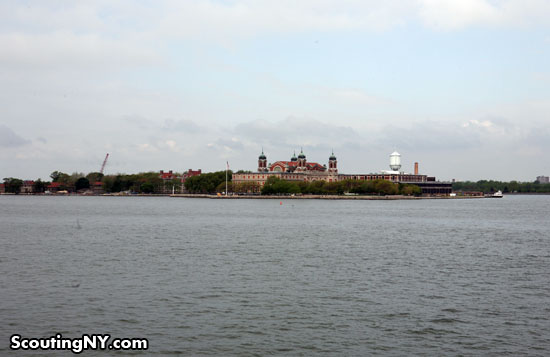
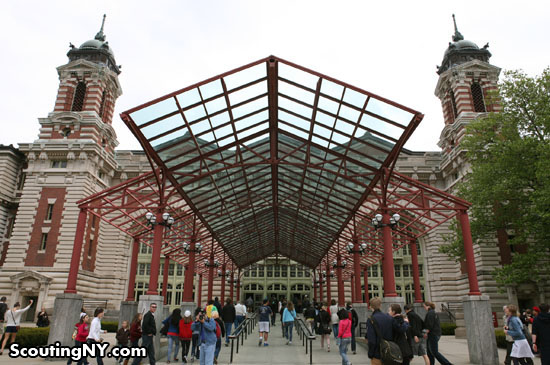
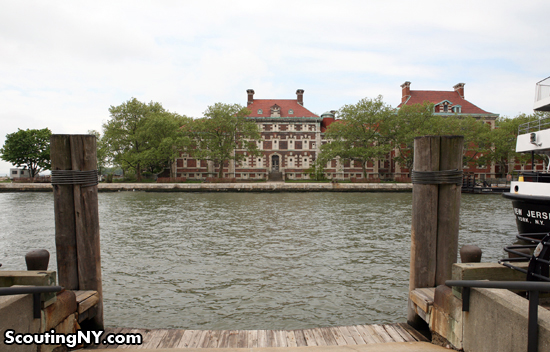
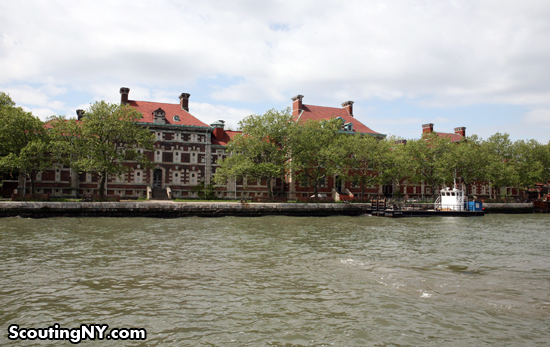
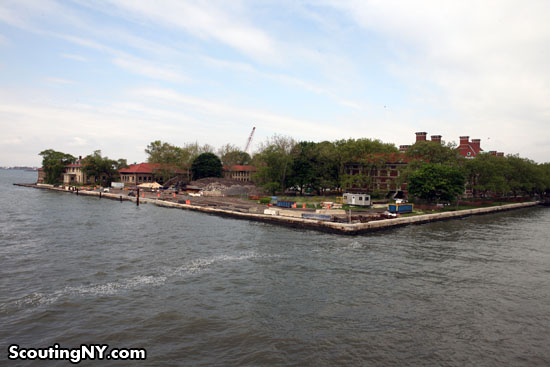

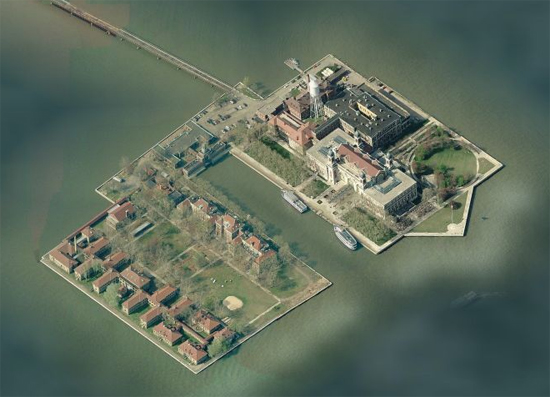
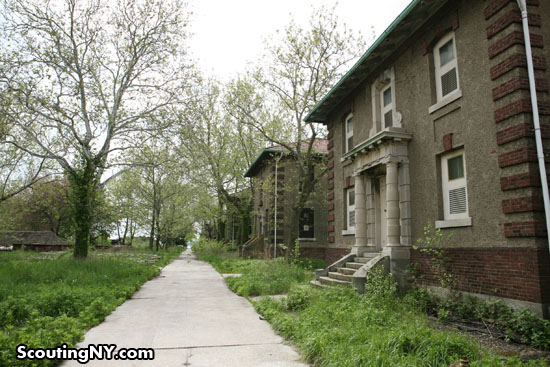
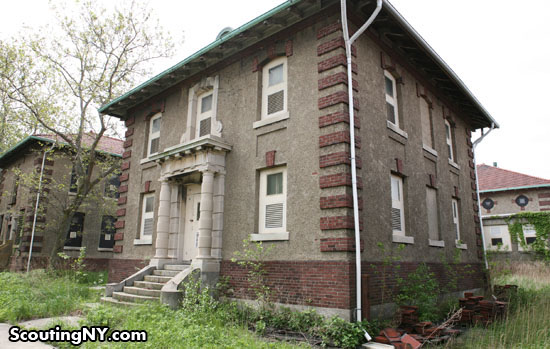

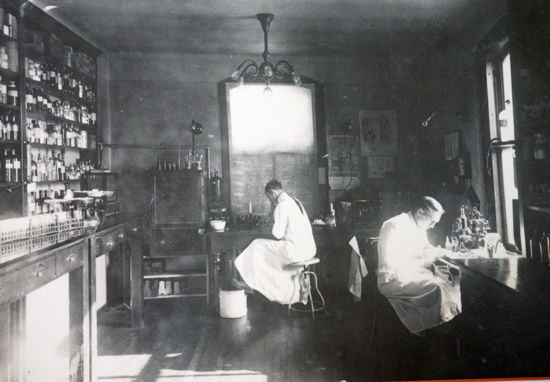




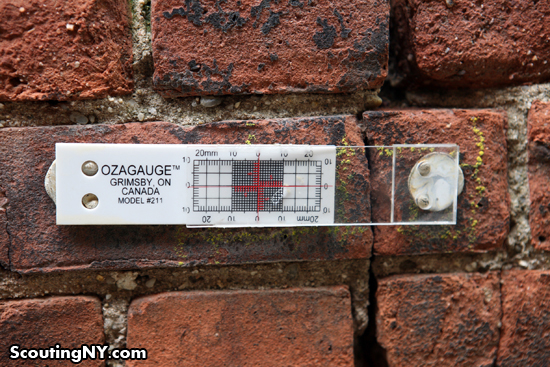
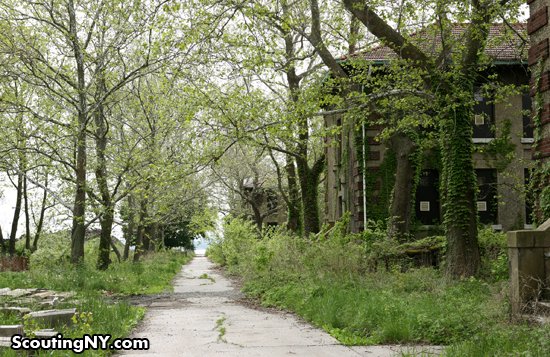


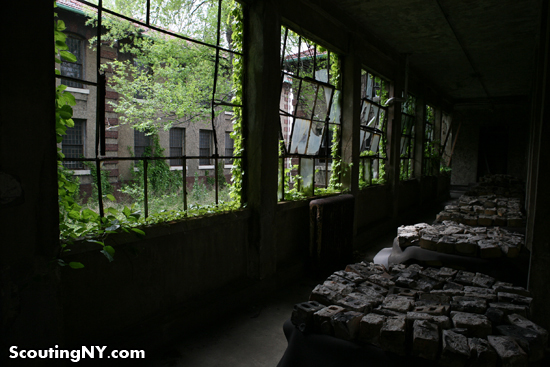
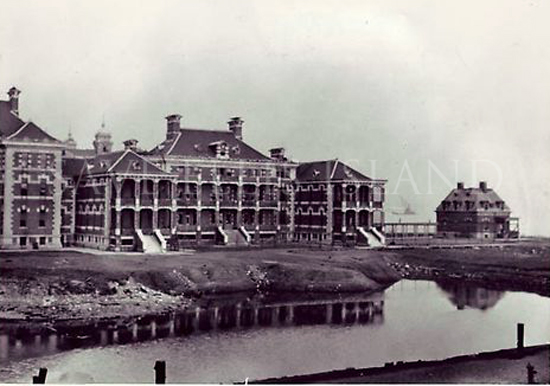

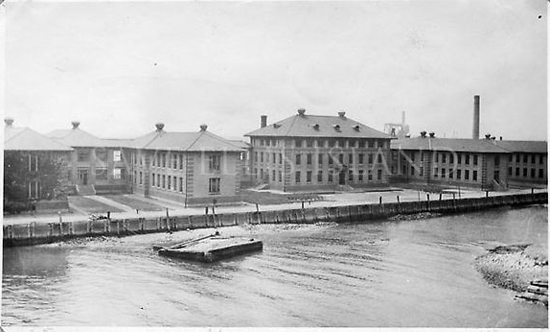
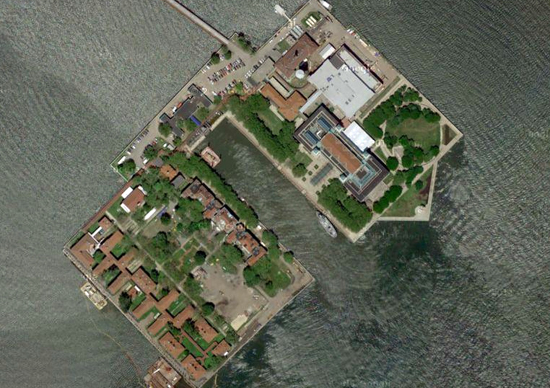

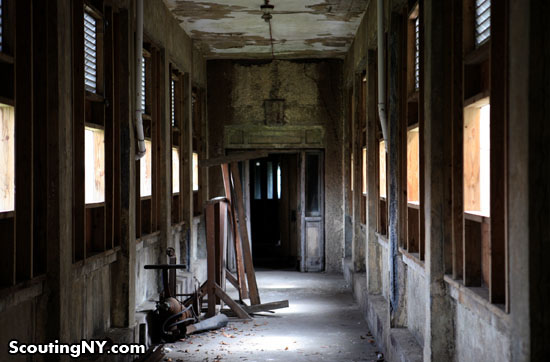
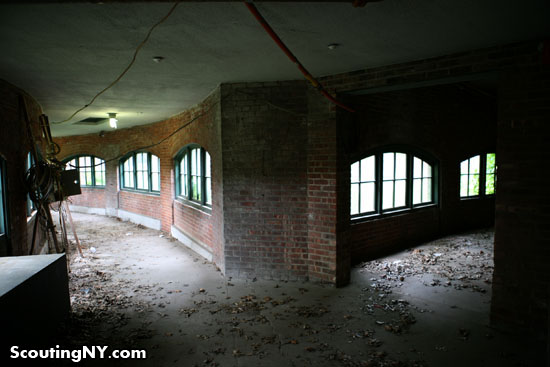

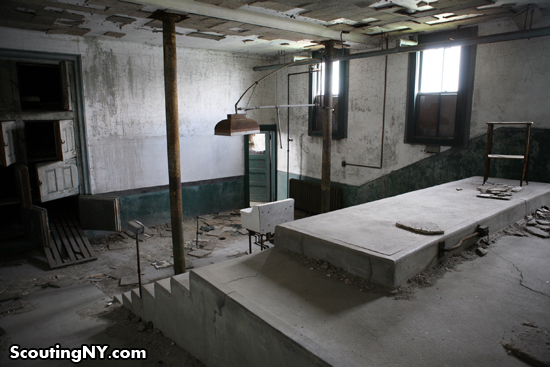

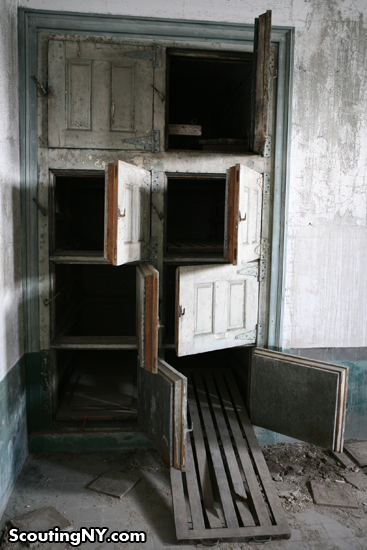
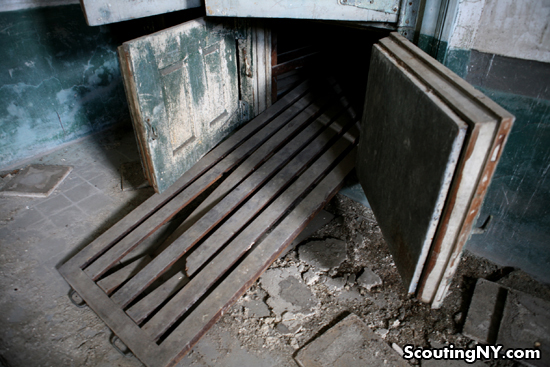

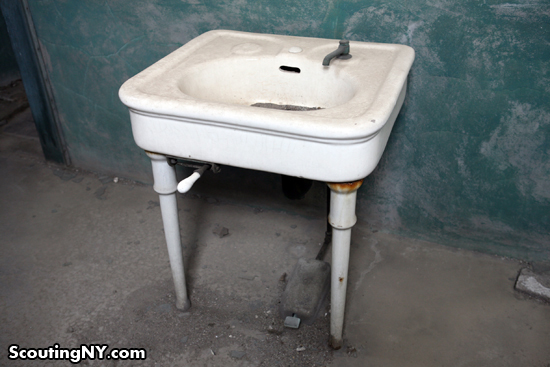
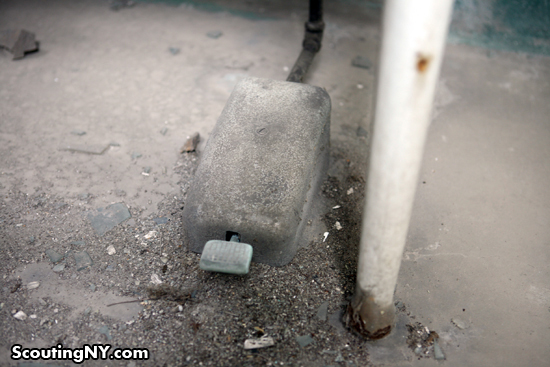

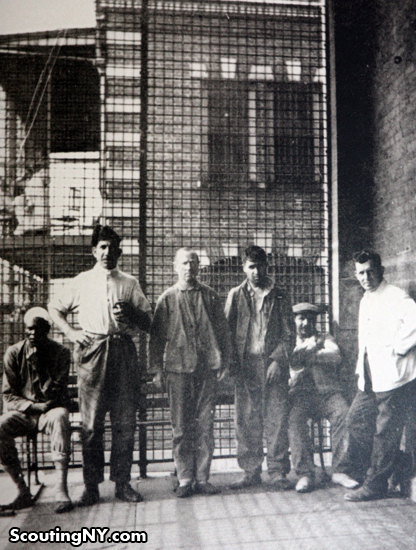
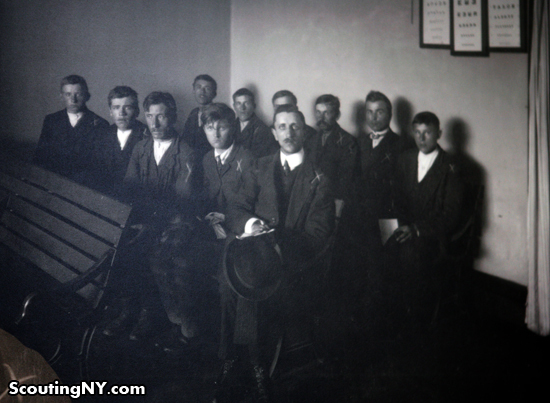

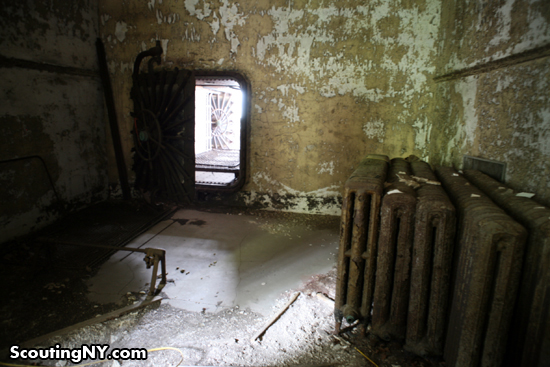
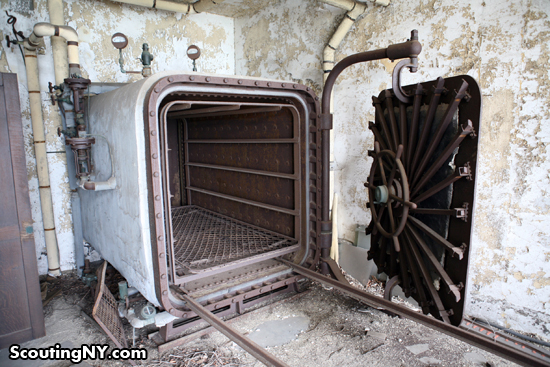


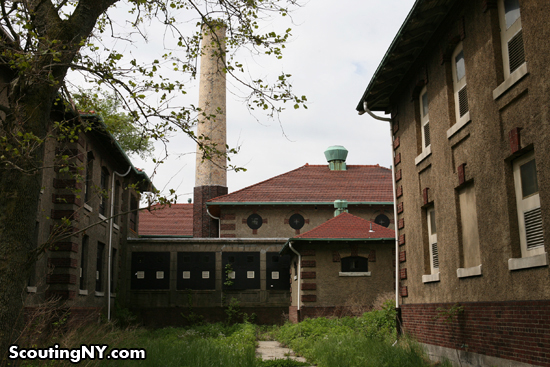
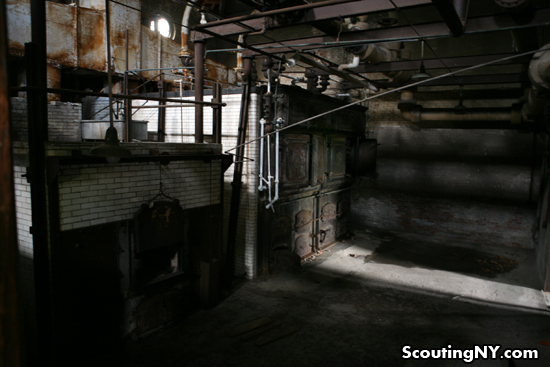



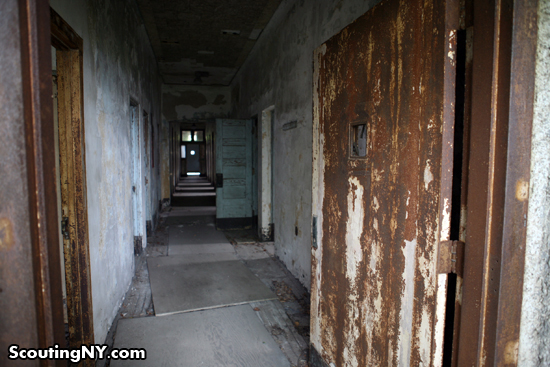

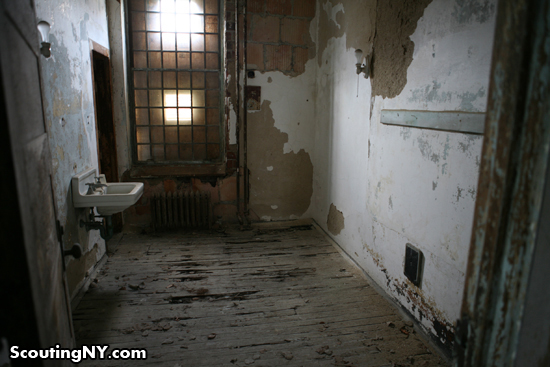



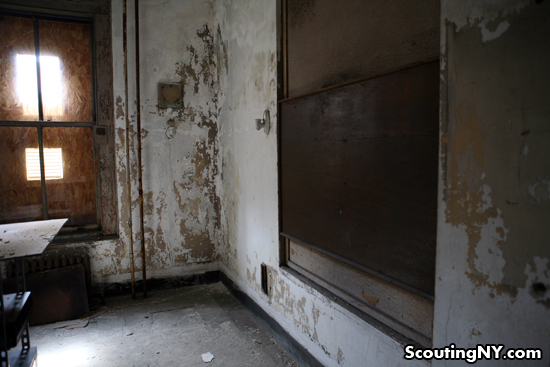
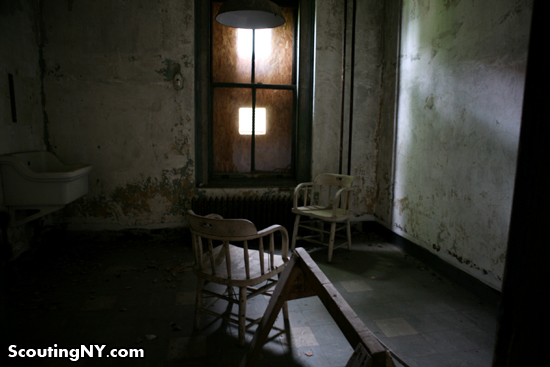
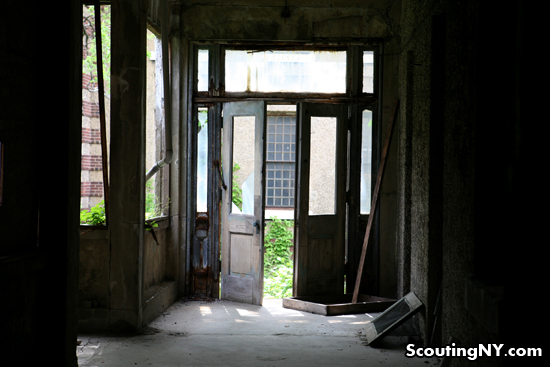
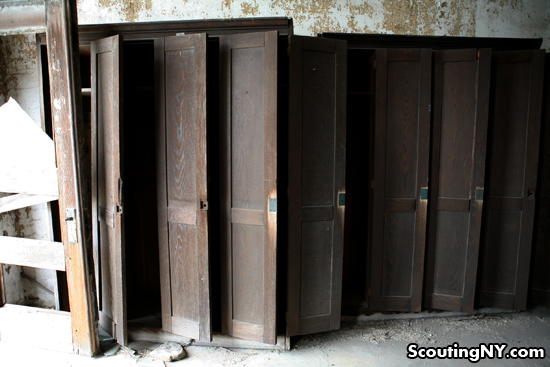
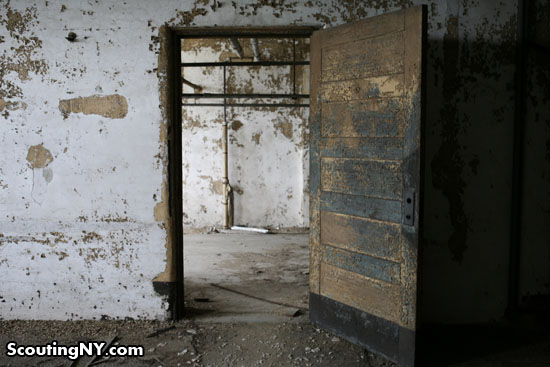
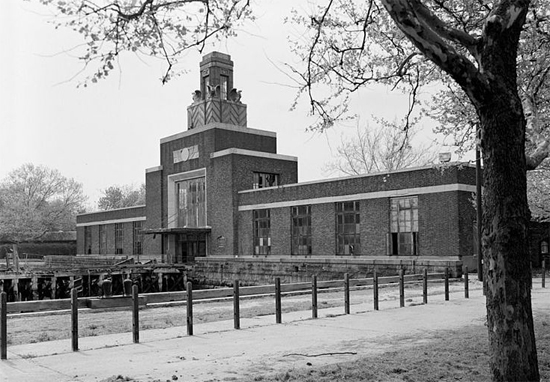
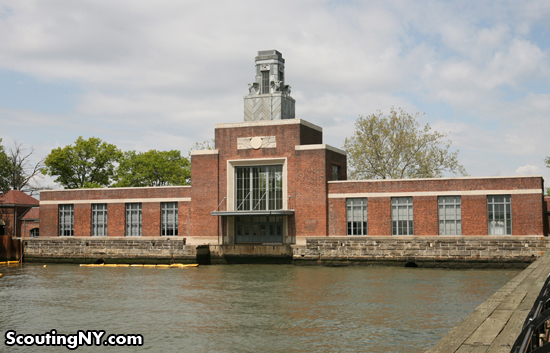
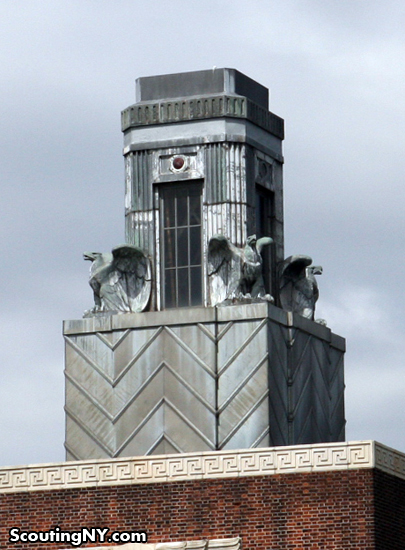
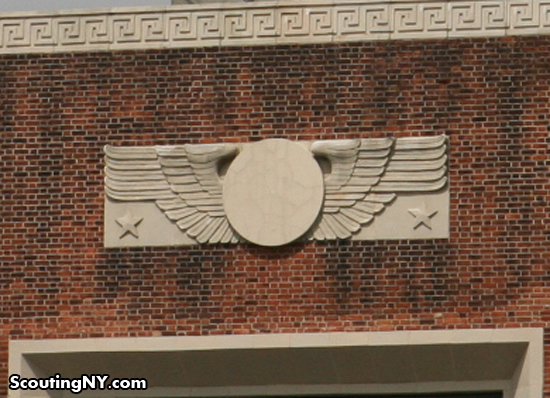
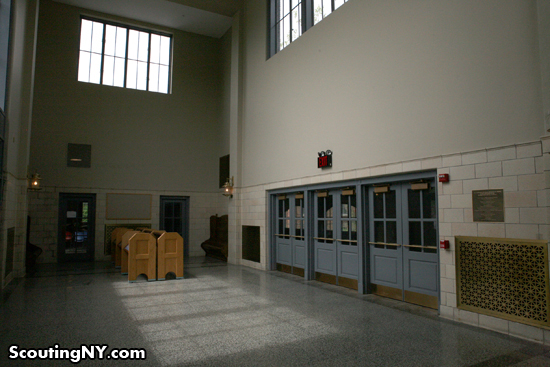
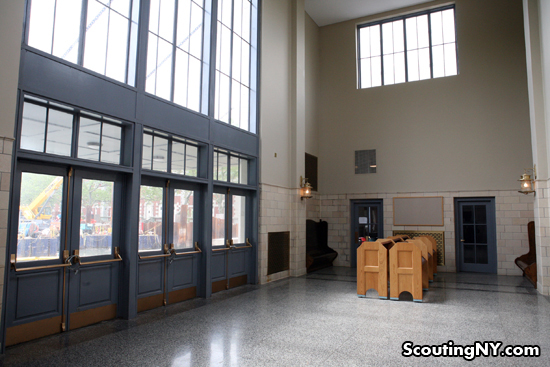
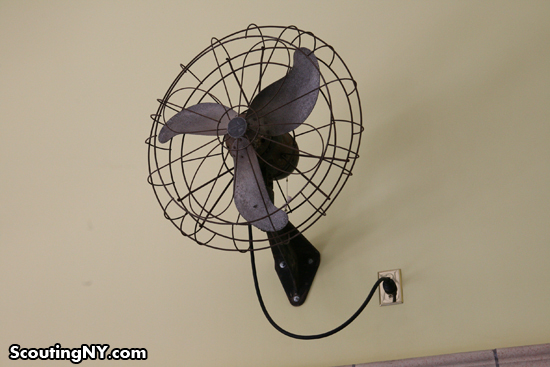
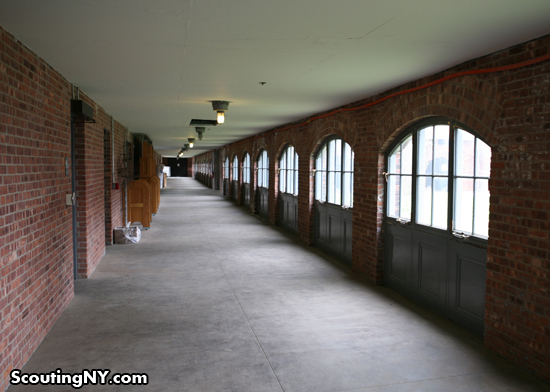

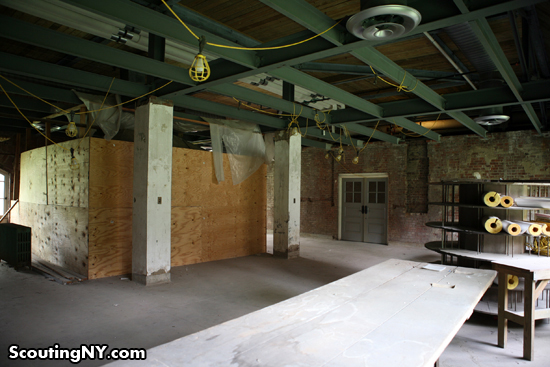
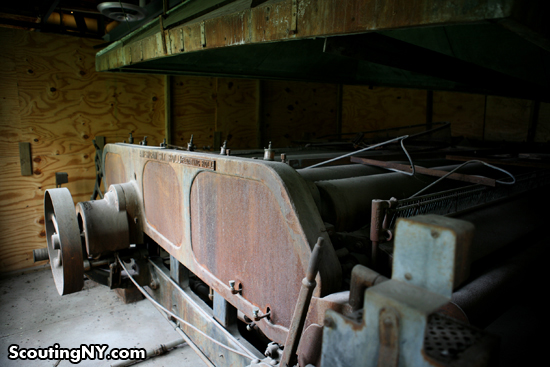
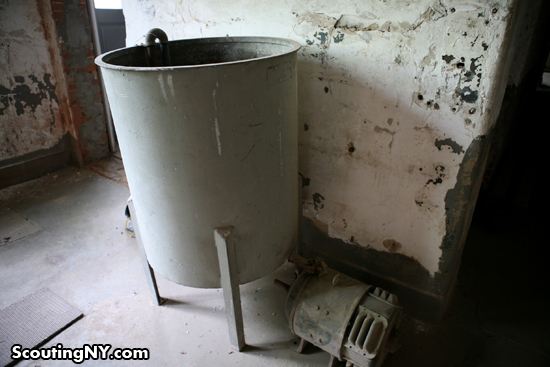

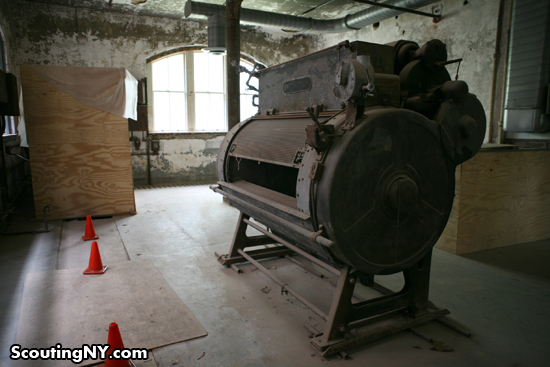
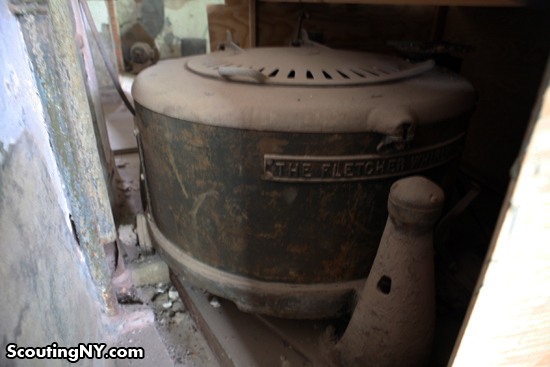

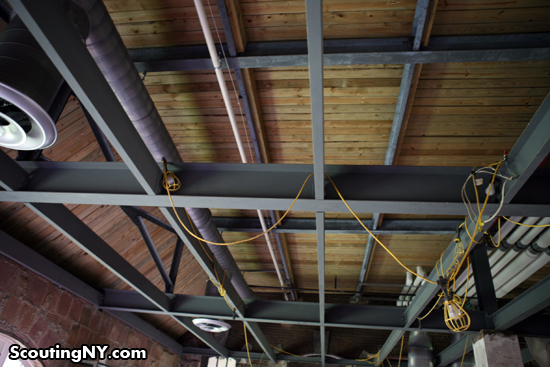
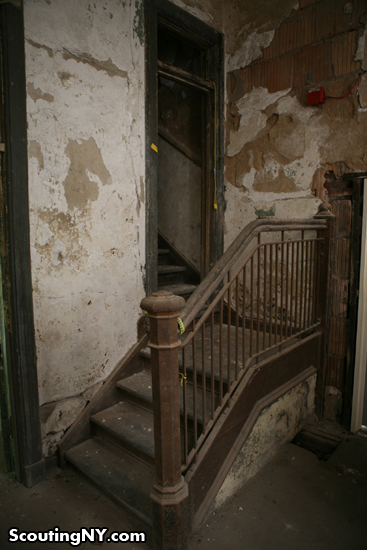

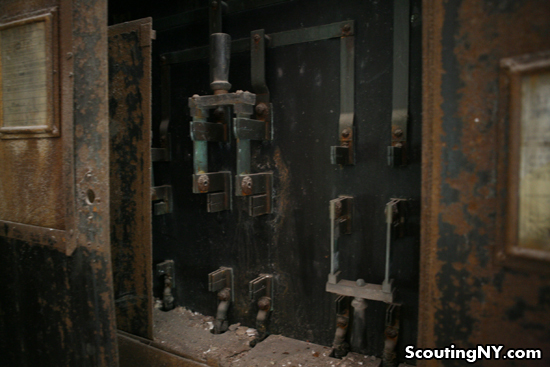
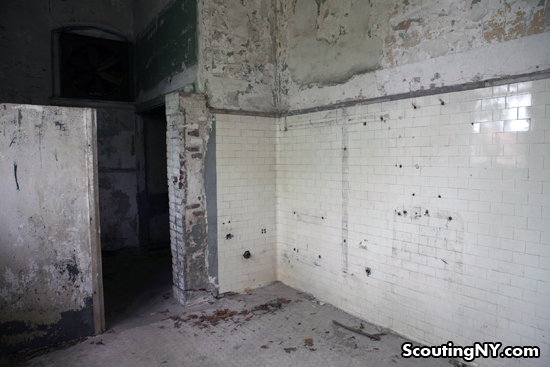
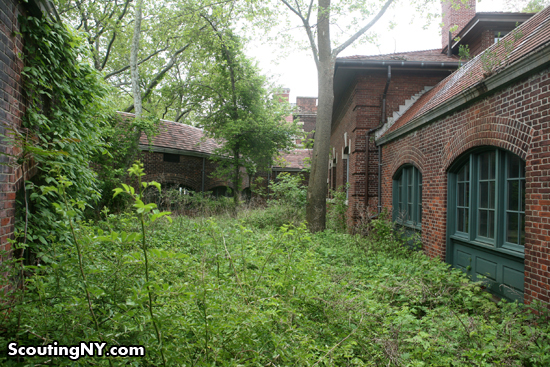

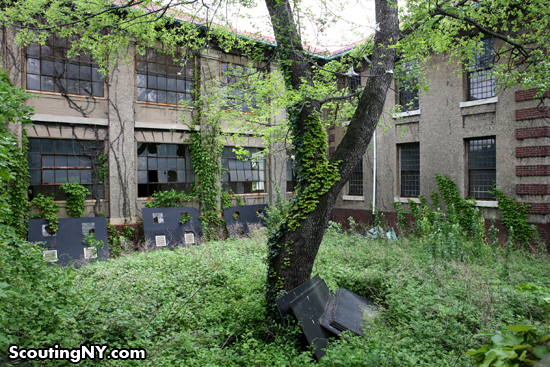

Oh my God, this is a dream come true!!! From the moment on I set foot on Ellis Island I desperately wished to explore the abandoned buildings as well as the decaying parts of the main building. It only takes a glimpse through one of the windows into the back yard in order to see that there is some much more to discover: http://4.bp.blogspot.com/_cYUXe13otkk/Sh0Wi8fB7UI/AAAAAAAAASs/f59N9JKV5Ko/s1600/isl_10_verfall.JPG
I loved the museum and was instantly fascinated by the conflict between the beautiful renovation and the ongoing decay. When I was there for the first time, there was an exhibition about how everything looked like back in the 1980s, when the main building was turned into a museum. I stood in awe.
Actually, whenever I tell people about what to do and where to go in New York, I always recommend to those short of time, to skip the Statue of Liberty and visit the immigration museum instead. It doesn’t only open a window back in time by the exhibition but also gives you an impression about time flying by and the effects of that movement in time. And I always suggest that the visitor takes some time, moves one of the curtains and peeks into the unkept back yard. More than once I was told how those few moments enhanced the experience of visiting the site.
I’m european and we don’t tend to be overly enthusiastic, but in this case I hardly can put enough emphasis on my words. Just love this article!
Thanks for documenting this. When I visited last year I did noticed them as the ferry pulled away and wondered what the story was. The do not look so bad from a distance. Did not know they were totally abandoned.
I’ve forwarded this page to Nick Groff of the Travel Channel’s ‘Ghost Adventures’ team, in hopes they can someday do a ‘lockdown’ here, to search for ghosts. If they do it, it will also lead to publicity for the Save Ellis Island fund. 🙂
Lin, you beat me to it! What a great way to get awareness to this cause.
Did you need special permission to get in to the abandon buildings and to walk around the grounds? I mean seriously this is amazing. I have to see this for myself. Thank you for the continued great blog.
My parents took me , my brother & sister to Ellis Island when it first reopened. I was immediately drawn to those “other” buildings that were falling apart. They are beautiful.
Beautiful buildings and wonderful photos. However, I’m seething with envy that you were able to go exploring! Thanks for posting these and reminind us about Partners in Preservation–I just voted!
Hey Nick, great stuff as usual. From time to time the Times has run stories on the Island that cover the abandoned parts of the Island as well as the restored areas.
I just shot the abandoned parts of the Brooklyn Navy Yard (from the outside of the fence) and sure do not want to see Ellis Island go the same route. Thanks for the update.
Excellent tour. As a NY resident for the first twenty one years of my life, I’ve never been to Ellis. Amazing stuff!
I too was allowed to tour Ellis Island duriing OHNY. You can find my photos at
http://www.flickr.com/photos/nipspix/sets/72157622567045968/
Enjoy!
I’ve been waiting for this installment since I found out about your wonderful blog. Hooray!! Thank you!!
Fantastic post. Thank you so so much. Wouldn’t it be fantastic if the entire island could be renovated! The circuit breakers reminded me of Young Frankenstein. Odd, I know. Love your blog.
It’s Alive!!! Did you make a yummy sound?
I volunteered with Save Ellis Island in the past. Ellis Island is such a wonderful and important place. If any of you have the ability to donate time, money or both please do.
Scout, what an amazing find! Fabulous pictorial as always, chilling in many regards but totally fascinating history. Once again many thanks for a tremendous post.
Restoration is important but I feel that no cleaned up version of that “series of refrigerated compartments where bodies would have been stored” will ever be as evocative as what you’ve captured here. Too bad there isn’t a way to stabilize the buildings and their interiors without completely wiping away the often poetic effects of age and neglect.
“…but I feel that no cleaned up version of that “series of refrigerated compartments where bodies would have been stored” will ever be as evocative as what you’ve captured here.” I was thinking the exact same thing when I was looking at the restored parts. There is absolutely NO WAY that a person will get the same feelings looking at a restored hospital as they would if they saw it the way it is now. You wouldn’t get that feeling of stepping into history and being able to imagine what was going on in that room. It’s just not the same.
Opium Museum-
The plan was/is to leave the autopsy theater in a similar suspended state as the laundry room, In order to show how it aged since 1954. Unfortunately when stabilizing buildings that are going to be inhabited asbestos and other safety concerns trump aesthetics.
Back in the ’70s, I remember being taken on a school trip to Ellis island and it was before serious renovations had been made. The Main Building was safe enough to go inside but I don’t recall details. I do recall that it was rather spooky and cool. It’s lovely now, if a bit sterile-looking, as many restorations are. I love how the Laundry was restored but retains the look of decay.
Amazing photos! Not sure how often Save Ellis Island does tours but just a reminder that Open House NY usually does one of the buildings & grounds every year. So if you want to see the buildings up close, there’s your chance!
I went in 2006, unfortunately before you could go inside… but even just the grounds are awesome.
Es alucinante !!! un viaje al pasado por el interior de unos lugares únicos. Enhorabuena.
The one and only time I was on Ellis Island was in mid 70’s when it was first opened for tours, believe it was ’76 tho not sure. One of the old ferries that transported the people was still semi-sunk at the dock. No fancy-dancy awnings, no gift shop, no museum interpretations (spelling?), no crowds, and it wasn’t squeaky clean and shining. Sidewalks were cracked and weedy, main door was bolted shut so went thru a side door, paint peeling from walls, broken windows, old and rusted furniture, debrie on the floors and yet I loved it just as it was. You could still feel and hear the millions that had passed thorough it. It was alive. I was glad it had been saved from the wreaking ball. Asked if the tour could go to the other side and was told no, not open to the public, too dangerous. So glad you posted those pictures. I finally got to see the ‘other side’ 36 yrs later. Looks like they, the committee, won’t made this side as antiseptic as the main building. Thank you.
I was wondering how you can be allowed to see the abandoned buildings and walk the grounds? I have a famous photographer at my hotel who is looking to shoot
thank you
Briana
OMG! What I wouldn’t give to visit Ellis Island right now to see it for myself. We’ve all seen pics of the Main Building on the North Island, but how many people know about the South Side of Ellis Island, much less have seen it in full detail? I’d love to donate money to rescue the south side of Ellis Island, turn it into a museum.
Save Ellis Island will soon be giving tours of the South Side for a donation. The donation money will go toward restoration project work. Check out the Save Ellis ISland website for upcoming announcements.
If I ever make it to NYC, I might do that.
Is this something that just anyone can go explore???
I worked at Ellis for two years in the 1970s as a park ranger, and took tons of photos. One of these days I have to get them digitized from the slides. I have hundreds of them and I explored all of these rooms and tunnels (you didn’t show any of the attics in the hospitals – they’re quite interesting also).
@ MD: So why don’t you? I’ve been interested in Ellis Island since the 80s, when I was a teenager. Like many people, I’ve heard of the Statue of Liberty and Ellis Island, but it wasn’t until more recently that I found out about the South end of Ellis Island.
It’s crazy that such important buildings are being left to deteriorate while the north end of the island is being saved. While it does cost money to save a vintage building, I believe it’s imperative that such historic buildings like Ellis Island be saved, restored, or possibly upgrade, or even all of the above.
And yet another story that doesn’t disappoint! Can’t get enough! Surprised there is no mention of Governor’s Island!
I believe it can be done. It’ll cost billions of dollars, and several years of restoration. But with some help from the US govt. and tax payers dollars from all over the world through tourism, I believe restoration can be done to Ellis Island’s South Side.